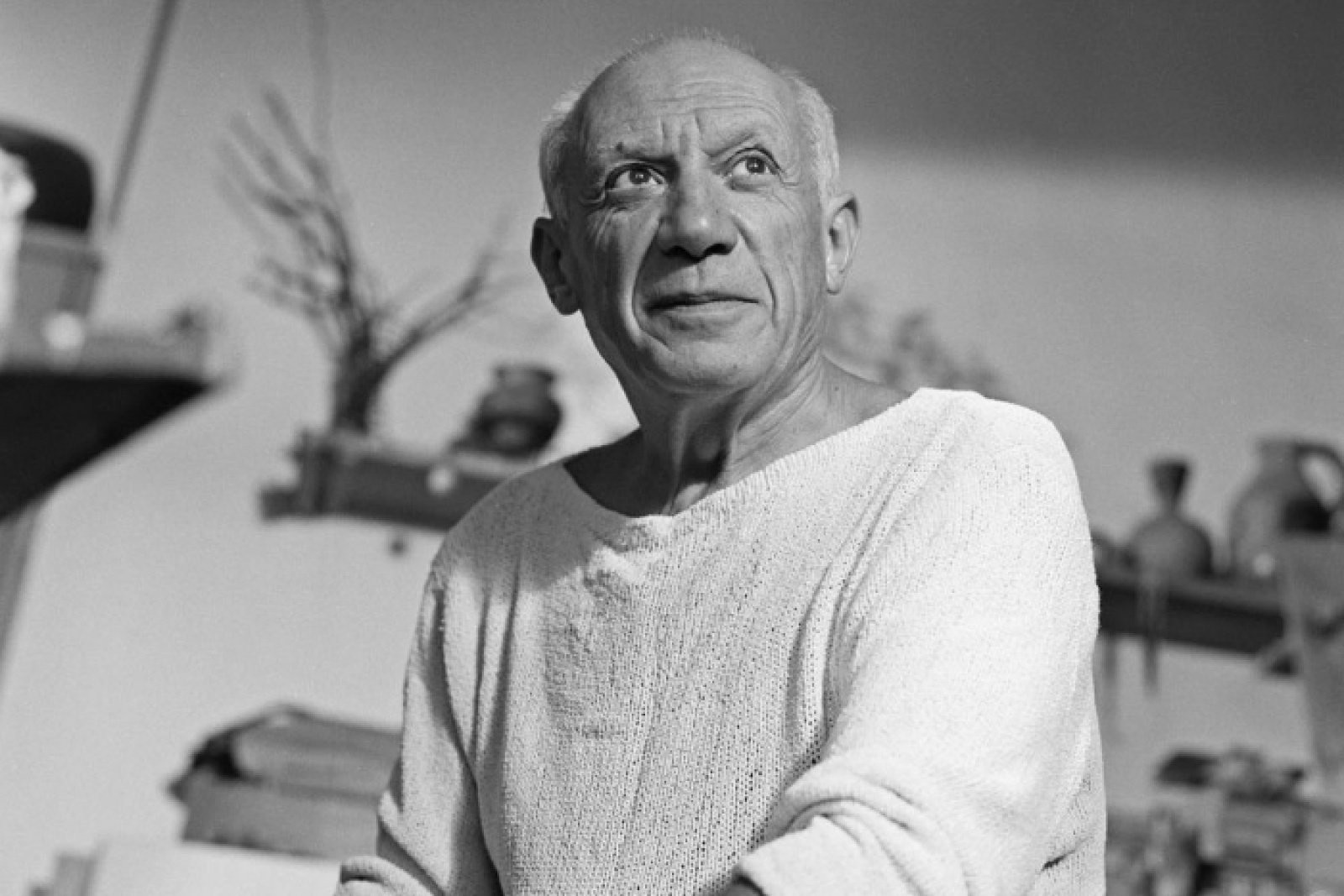

Many people left a mark on the history of fine arts, but only a few managed to change the image of the era with their creativity. One of such outstanding artists of the XIX-XX centuries was Pablo Picasso. During his long and fruitful life, he created tens of thousands of works, changed his citizenship, tried himself in different styles, created a new direction of painting, and contributed to the affirmation of humanistic ideals.
The beginning of the path
The future artist was born in 1881 in the Spanish port town of Malaga. It is said that the midwife thought he was dead: the child was so weak that he showed no signs of life. It is unknown how the world genius's fate would have developed if his uncle had not approached him with a cigar. Having smelled tobacco, the child cried. The full name of Picasso, received by him at baptism, consists of 23 words: Pablo Diego José Francisco de Paula Juan Nepomuceno María de Los Remedios Cipriano de la Santísima Trinidad Mártir Patricio Ruiz y Picasso. According to local tradition, all the patron saints of the family and relatives were mentioned in the name. The painter's father was a fine arts teacher specializing in still lifes and landscapes. Therefore, the boy was involved in the beautiful from a young age. They say that his first word was "piz" (short for "lapiz" - pencil in Spanish). The talent appeared when he was seven years old, and at 13, the boy surpassed his father in oil painting. You can evaluate the achievements by such works as "First Communion" and "Portrait of Mother."
Life as a creative search
In childhood, Picasso's mother told fairy tales using recently experienced emotions. Later, the artist often used this manner in his work, filling the paintings with vivid feelings and emotional impulses. Emotionality and the desire to release real emotions influenced his fate: he was in constant search, did not stay long in one place, fell in love with new women, and was extremely honest in his relations with the world.
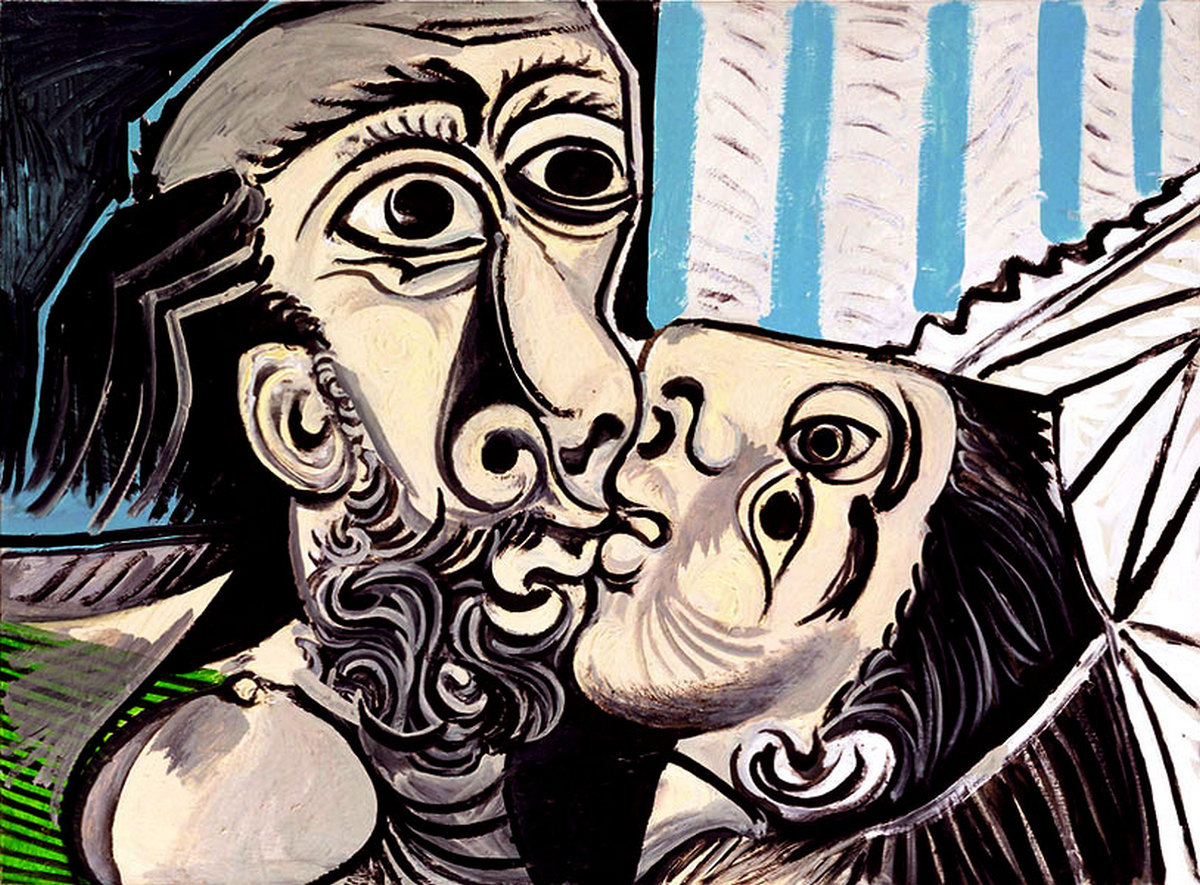
"The kiss" Pablo Picasso. Photos © picasso-picasso.ru
The creative path of the painter can be divided into several periods in which the vector of development of creativity radically changed. While studying in Madrid, Pablo devoted most of his time to studying the achievements of past eras and the work of outstanding masters. He was interested in European painting and Japanese prints, Gothic sculpture, and art of the Middle East.
In the "blue period," which lasted for about three years, tragic events (the suicide of his friend Carlos Casajemas) and fascination with impressionism brought Pablo into a state of prolonged melancholy. He painted his pictures in cold blue and gray-blue tones. After moving to Paris, the "pink period" begins: despondency goes away, and the paintings acquire cheerful colors. Images of actors, clowns, and prostitutes appear on the canvases, made in ochre and pink tones.
In 1906, the master set his record by rewriting the portrait of Gertrude Stein about 80 times! Unsatisfied with the result of the work, the artist decided to depict not specific people but their "essence." In search of inspiration, Pablo began to study African ritual masks and sculptures. The sensuality and simplicity of forms gave art a magical charm in the understanding of the master. The "African period" lasted two years.
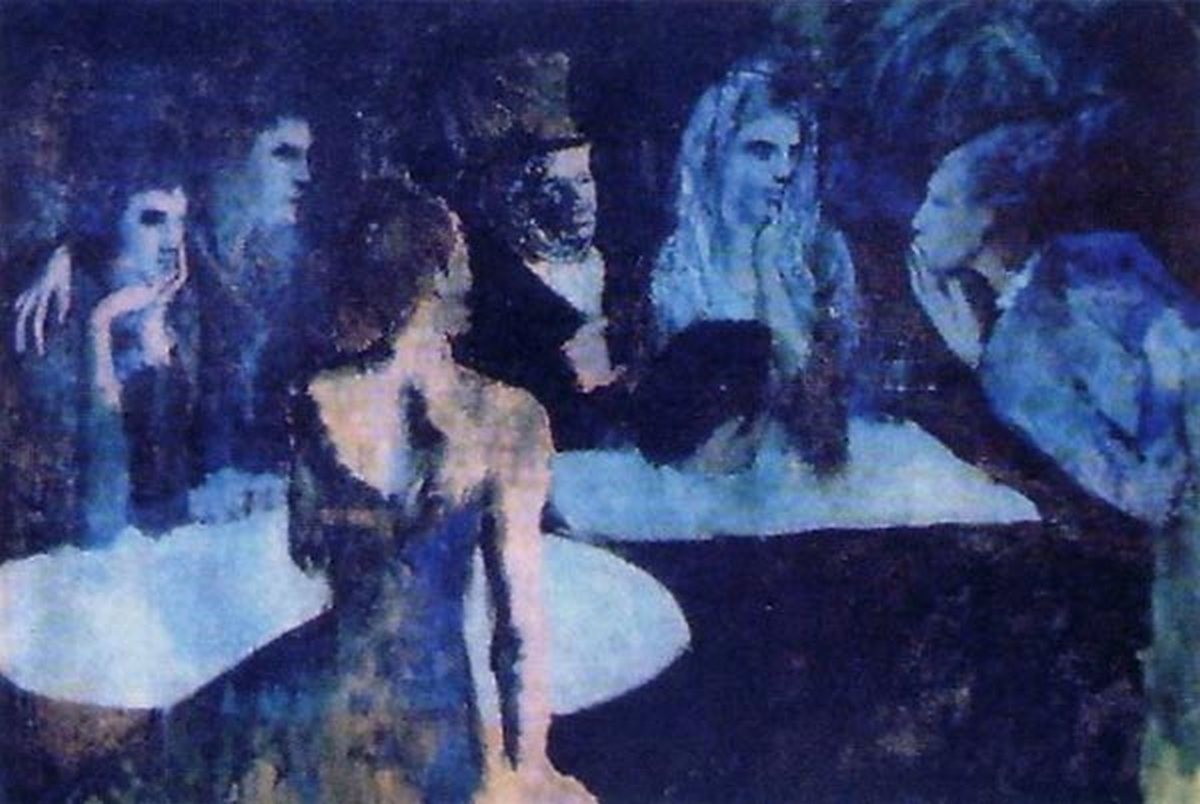
"Les Noces de Pierrette" Pablo Picasso. Photos © evg-crystal.ru
The search for novelty led the painter and his associates to abandon the traditional geometric form. Thus, cubism appeared, which shook the tradition of fine art to the basics. But the search did not end there: after nine years of bold experiments, in 1918, the master again updated his style, moving away from the results of past experiments. Precise forms, light colors, and bright faces of people fill the paintings in the period of "neoclassicism." The most famous work then was "Portrait of Olga in an Armchair," dedicated to his wife, Olga Khokhlova.
A new turn in creativity came in 1925. Under the influence of the ideas of surrealism, Picasso painted pictures with frightening images from the world of hallucinations. Convulsions, hysteria, and deformations saturate the atmosphere of the paintings. At the same time, he establishes a relationship with the young Maria Theresa Walter, who inspired the master to write several paintings and portraits. His interest in surrealism was lost after his separation from his mistress Maria and his wife Olga in 1936.
European citizen
Despite his Spanish origin, the artist is known by his Italian maternal surname Picasso. Perhaps he wanted to avoid coincidence with his father's surname, Jose Ruiz, or maybe he wanted to emphasize his Italian origin. After finishing his studies in Madrid, he moved to France, where he gained recognition, and the master spent most of his life. Despite this, Pablo did not lose ties with his homeland and actively participated in its political life. During the Spanish Civil War (1936-1939), the Republicans received financial assistance from him.
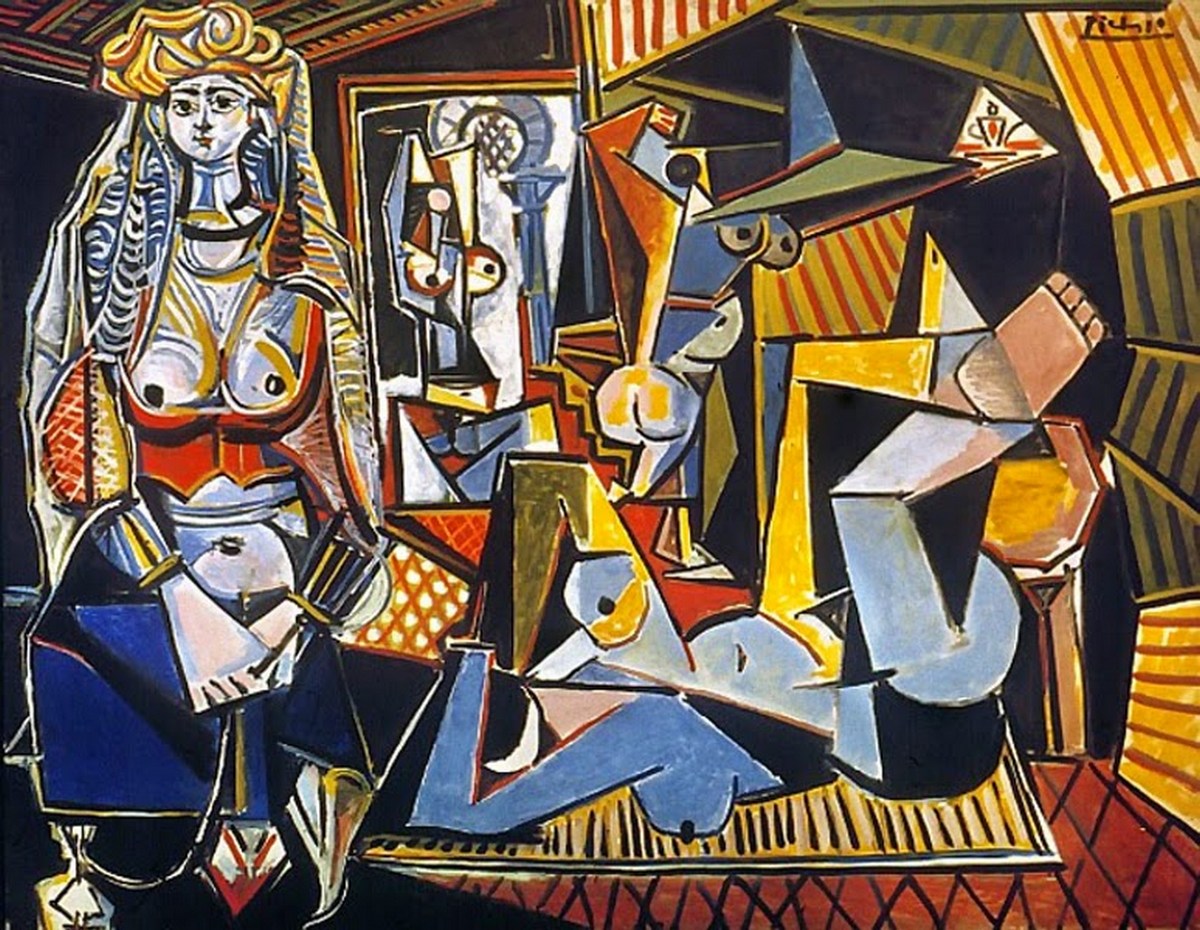
"Les Femmes d'Alger" Pablo Picasso. Photos © evg-crystal.ru
A series of engravings, "Dreams and Lies of General Franco," was used for propaganda in the ranks of the Francoists. After the dictator's victory, the artist had to change his citizenship. However, he waited to manage it. The French government, taking into account its scandalous nature and political views of Pablo, did not want to give citizenship under the conditions of the impending catastrophe of World War II. Later, the request was granted, so today, both Spaniards and French consider the artist their own.
Not only a painter
Picasso became famous as a painter, but he also reached heights in other art forms. His passion for sculpture became known only in 1960 when several works were presented at exhibitions in London, New York, and Paris. The list of the most famous sculptures includes such works as "Head of a Woman" (Fernanda), "Glass of Absinthe," "Pregnant Woman," "Baboon with a Baby," and "Head." Today there are 1228 works with confirmed authorship. Some of them can be seen in museums in Spain, France, and the USA.
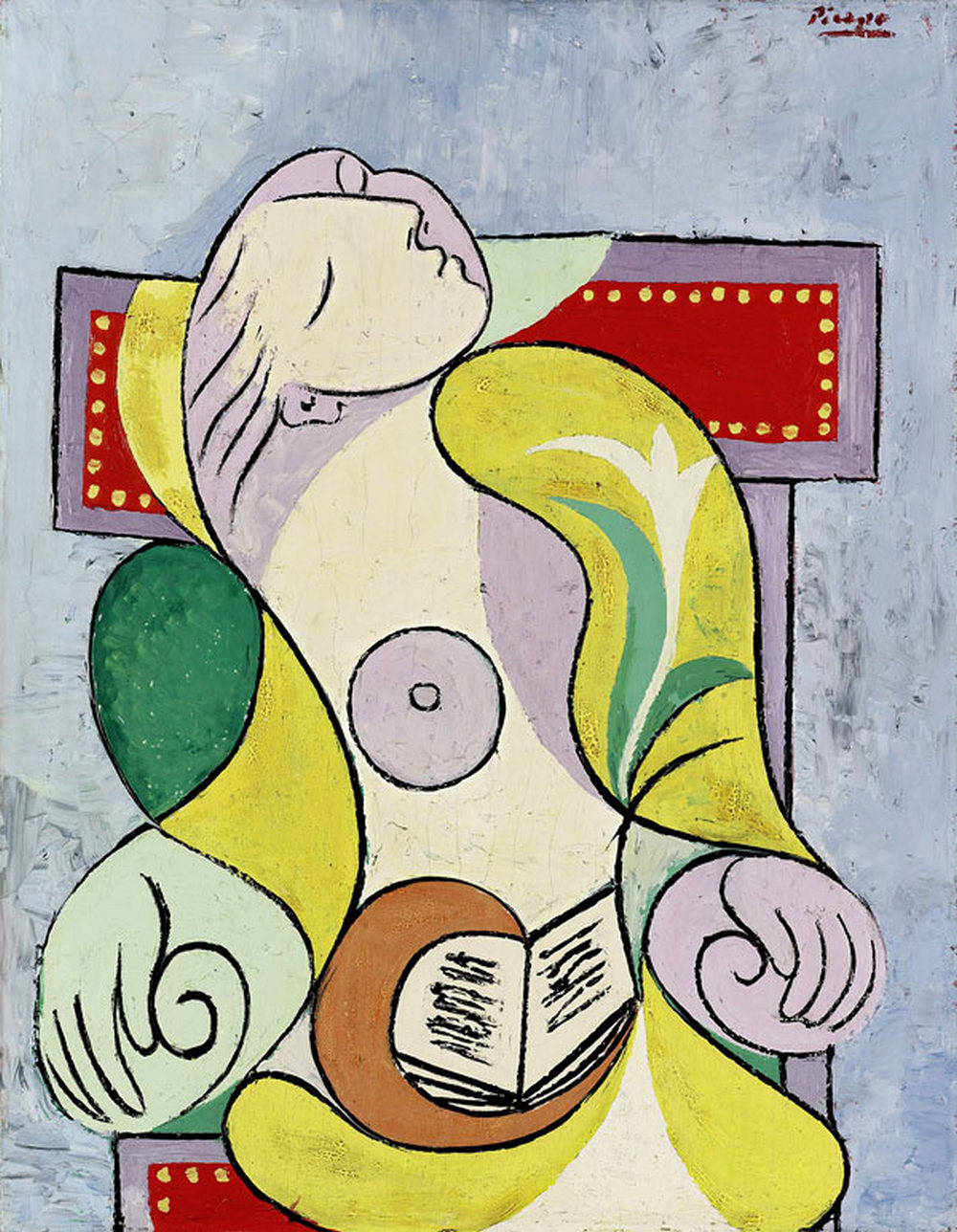
"Reading" Pablo Picasso. Photos © evg-crystal.ru
In 1947, the master visited an exhibition of ceramics, where he showed interest in this traditional material and even made a few small things. Over the next year, about 2000 works were created. Perhaps the interest in ceramics was caused by the fascination with the Mediterranean civilization. The motifs of Cretan-Mycenaean culture, carpet style, Arabic "curls," Moorish geometry, and Spanish bullfighting are visible in the works. Dramatic works and poems by Picasso are also known. Artistic images are expressed both by color and pattern and by form. Notable successes in this field were not achieved, but it was a living testament to the versatility of talent.
Peace and war in the life of Picasso
Politics in the worldview of the artist occupied an important place. Since the beginning of the twentieth century, representatives of leftist movements could be seen among his acquaintances. Later, the master participated in the political life of Spain and France, opposing Nazism, dictatorship, and militarism. His brush belongs to the famous "Guernica," painted in 1937 by order of the Spanish government. The reason for its creation was the bombing of Guernica (a city in the Basque Country in northern Spain).
Contemporaries claim that the news of the death of thousands of people was a real blow to the master. Work on the black and white canvas in the manner of cubism lasted for a month.
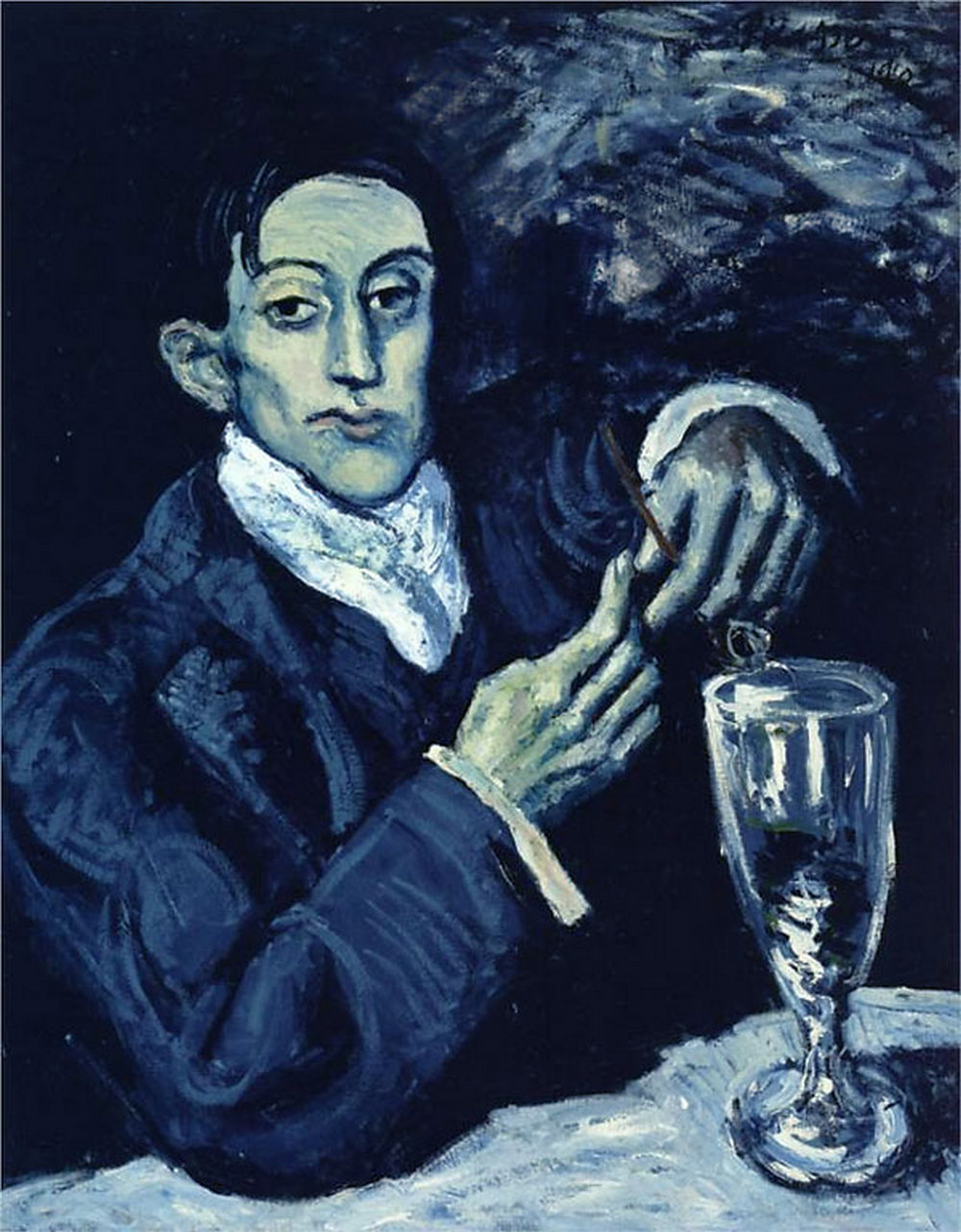
"Portrait of Angel Fernandez de Soto" Pablo Picasso. Photos © evg-crystal.ru
The evolution of his views smoothly drifted towards communism, and in 1944 the artist joined the French Communist Party. Picasso saw the fear of war in all its horror: he did not leave Paris even during its occupation. The destruction caused by World War II reinforced his rejection of violence. Symbolically, Picasso was commissioned to create the famous emblem for the World Peace Congress. It became the image of the "Dove of Peace," which later "flew around the world." The work on the emblem was also an opportunity to remember his childhood: his father often allowed his son to draw pigeons' legs. As a model for the first version of the emblem, the artist used birds with feathers on their legs from the aviary of his friend Henri Matisse. Later, the image underwent several changes until it became a symbol familiar to the whole world.
Recognition and wealth
Fame came to the artist at a young age. At first, the unconventional manner was met with criticism, and even friends considered some bold experiments as mockery. For example, Henri Matisse was dumbfounded when he saw the painting "Girls of Avignon" (1907). But almost every undertaking passed the test of time, confirming the author's genius.
Picasso became popular, and his works were bought for big money. At the end of the first decade of the twentieth century, he escaped from poverty forever and became one of the wealthiest artists of his time. He left his heirs only real estate worth about one and a half billion dollars. The results of several auction auctions give us an idea of the value of the paintings:
2010 - "Nude against a background of bust and green leaves" ($106, 482 million).
2013 - "Dream" ($155 million).
2015 - "Algerian Women" (version O) ($ 179, 365 million).
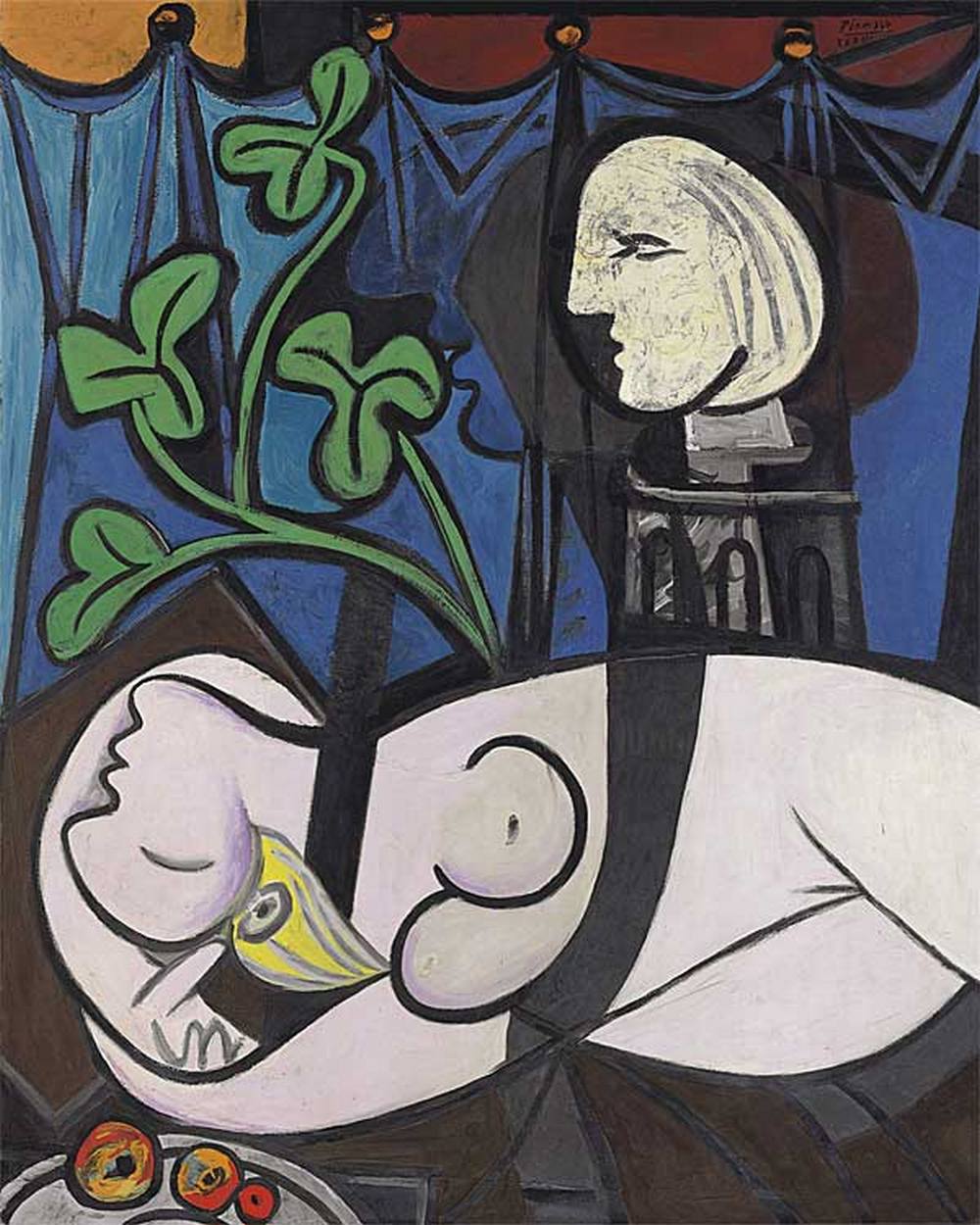
"Nude, green leaves and bust" Pablo Picasso. Photos © evg-crystal.ru
An outside observer may have the impression that the life of the master strangely obeyed a specific dramatic scenario. Having gained recognition and wealth in the last years of his life, Picasso turned to the works of artists of the past, trying to take a fresh look at himself, his work, and art in general. It was a period of returning to the roots and rethinking the life path. On the canvases of Picasso appeared variations on the plots of paintings by Manet, Velazquez, Goya, El Greco, Delacroix, and Courbet. The artist left our world at 91 at his villa Notre Dame de Vie in France. His legacy is about 20,000 works in various types, styles, and genres of art. You can get acquainted with his work at the Picasso Museum in Málaga. In the artist's homeland, there is also a famous branch of the Pompidou Center, the roof of which is decorated with a cube of colored glass. According to the architect, it should remind us of cubism and its influence on the history of modern art.
KyivGallery art critic
